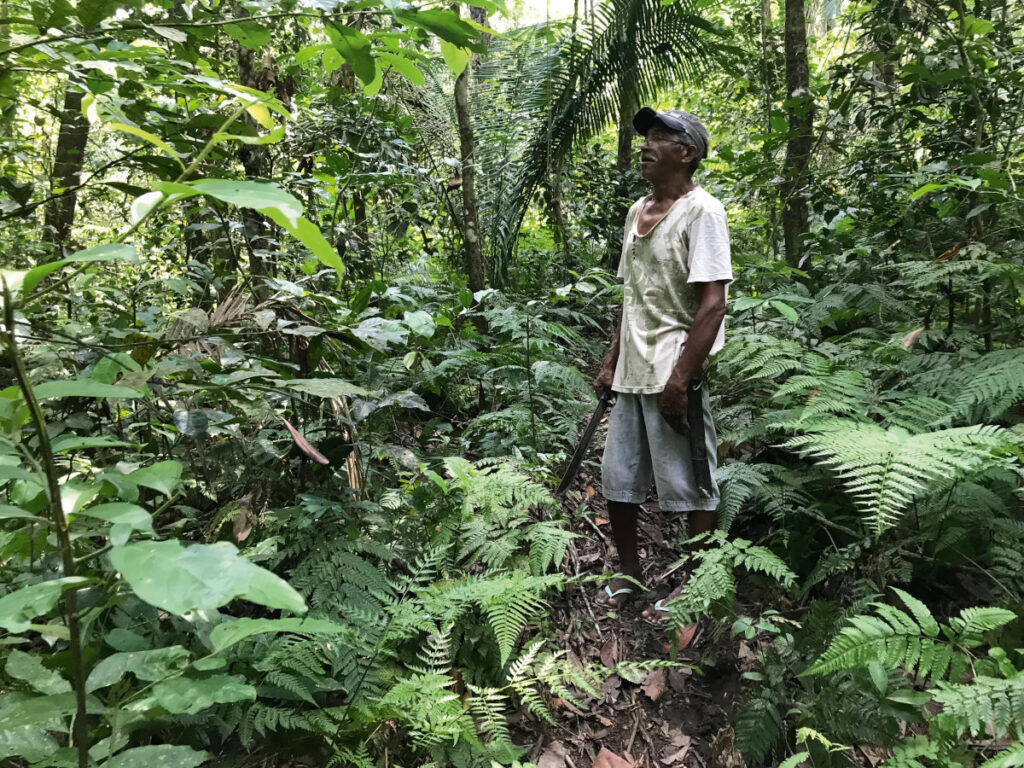[LUM#21] The price of the forest
Encouraging small landowners not to cut down trees by paying them financial compensation is known as payments for environmental services. But is this really effective in reducing deforestation in the Amazon? To find out, economist Gabriela Demarchi conducted a groundbreaking assessment.

543,940 km² is the surface area of mainland France. It is also roughly equivalent to the area of forest destroyed in the Amazon over a 10-year period. "Brazil is the country that loses the most tropical forest each year, " says Gabriela Demarchi, an economics researcher at the Moisa laboratory.1. At this rate, the World Wildlife Fund ( WWF) estimates that 55% of the Amazon rainforest could disappear by 2030.
An ecological disaster with far-reaching consequences. "These dense forests are populated by very old trees that store a lot of carbon. Deforestation and land use change are the second largest source of greenhouse gas emissions, just behind the use of fossil fuels, " says the researcher.
Limiting global warming
Reducing deforestation in the Amazon is a crucial issue and a major lever for limiting global warming. Among the tools proposed to achieve this is the REDD+ mechanism, which aims to reduce emissions from deforestation and forest degradation. "This mechanism proposes that developed countries that emit the most greenhouse gases pay compensation to developing countries to maintain their forest cover," explains Gabriela Demarchi , who points out that in recent decades, there has been a proliferation of such projects in the Brazilian Amazon.
In her thesis at the Center for Environmental Economics in Montpellier, the economist examined one of these programs implemented between 2013 and 2017. The aim was to assess its effectiveness in reducing deforestation. This program, known as PAS, is based on what are called payments for environmental services. "This pilot initiative relies on financial compensation to encourage farmers not to cut down trees on their land, " explains the Brazilian researcher.
Statistical twins
In practice, 350 small farmers received money in exchange for committing to maintain forest cover on their land. "Farmers cut down trees to convert forest into farmland or to raise livestock, so we pay them money to compensate for their loss of income and provide them with an alternative livelihood, " explains Gabriela Demarchi.
But how can the effectiveness of such a scheme be assessed? "With a scenario like this, it seems difficult to know whether or not the farmer would have deforested his land even if he had not received financial compensation, so these programs are complicated to evaluate." So the economist used what is known as a counterfactual impact assessment. "We found rural households with characteristics as close as possible to those enrolled in the program. We call them statistical twins." If the behavior of the statistical twin differs from that of the twin participating in the study, then we can deduce that the program has had an impact. And the researchers were able to quantify this impact: "The program reduced deforestation on these farms by 15 to 43% between 2013 and 2017, " says Gabriela Demarchi. But what happens when the program ends and the owners stop receiving subsidies? "The risk is that they will cut down more trees to make up for previous years. In economics, this is called a rebound effect. "
Rebound effect
Researchers observed that although farmers resumed their usual practices after compensation payments were suspended, they did not make up for their "deforestation deficit. " "This means that the environmental gains generated by the program were maintained, so the forest was indeed preserved," Gabriela Demarchi points out.
This has a beneficial impact on the Amazon and positive consequences for global warming, as each tree preserved means fewer greenhouse gases. "If we convert the environmental gain into monetary gain based on the social cost of carbon, then we can estimate that the benefits of the program have outweighed these costs and that it can be considered profitable, " explains the economist.
Profitable but still room for improvement. Would the program have been even more effective if the contract offered to farmers had been more flexible? "The deal was that if even one tree was cut down, they would be removed from the program. We could imagine a contract where cutting a few trees would result in penalties without terminating subsidies, which would allow more participants to remain in the program, " explains Gabriela Demarchi. Continuing this study, the researchers set up a randomized controlled trial. This was the first of its kind to be conducted in the Amazon to test the effectiveness of introducing flexibility into this type of program. The results suggest that such a measure would preserve more forest, but the associated costs could ultimately make the operation unprofitable.
Research that could encourage decision-makers to invest in this type of program, "but also enable better distribution of the funds invested so that the program is even more effective," emphasizes the researcher, who now aims to study this issue on a larger scale and over a longer period. "There is also a risk of what is known as a leakage effect: when you stop cutting in one place, you cut more elsewhere, so you have to analyze the impact of these programs on a large scale."
Find UM podcasts now available on your favorite platform (Spotify, Deezer, Apple Podcasts, Amazon Music, etc.).
- Moisa (CIRAD, INRAE, IRD, Institut Agro, CIHEAM)
↩︎